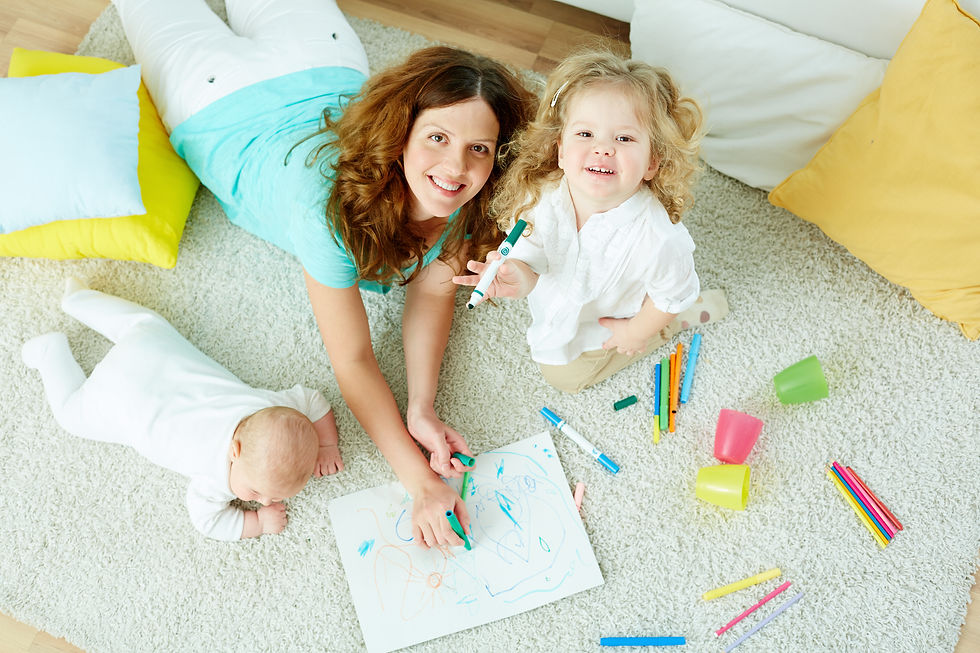Big Feelings in Little Kids
- carolineflinn
- Apr 12
- 1 min read
By Caroline Flinn, M.S., CCC-SLP

At ages 3 and 4, kids are still learning the names for their emotions, let alone how to regulate them. So when they feel something big — frustration, jealousy, embarrassment, disappointment — and they can’t express it with words, it often comes out physically (like knocking over a chair or hitting a table).
What to Do (When They're Calm):
Model Language
“It’s okay to say, ‘I’m mad!’”
“You can tell me, ‘That made me sad.’”
"Oh man! I wanted to win!"
You’re giving them scripts they can fall back on later.
Validate the Feeling, Not the Behavior
“I can see you’re upset. It’s okay to feel that way.”
“It’s okay to be angry, but it’s not okay to hit or throw.”
This helps them separate what they feel from what they do.
Teach Replacement Behaviors
“You can squeeze your hands like this.”
“You can stomp your feet.”
“You can take a break in your calm-down spot.”
You're providing them with appropriate ways to express their emotions.
Make sure to provide positive praise when they use the strategies you teach them!
"I'm proud of you for using your words and asking to take a break in your calm down area."
"I like how you told me 'I'm mad' and you stomped your feet instead of hitting."
"Thank you for telling me how you feel. I understand why you are upset."



Comments